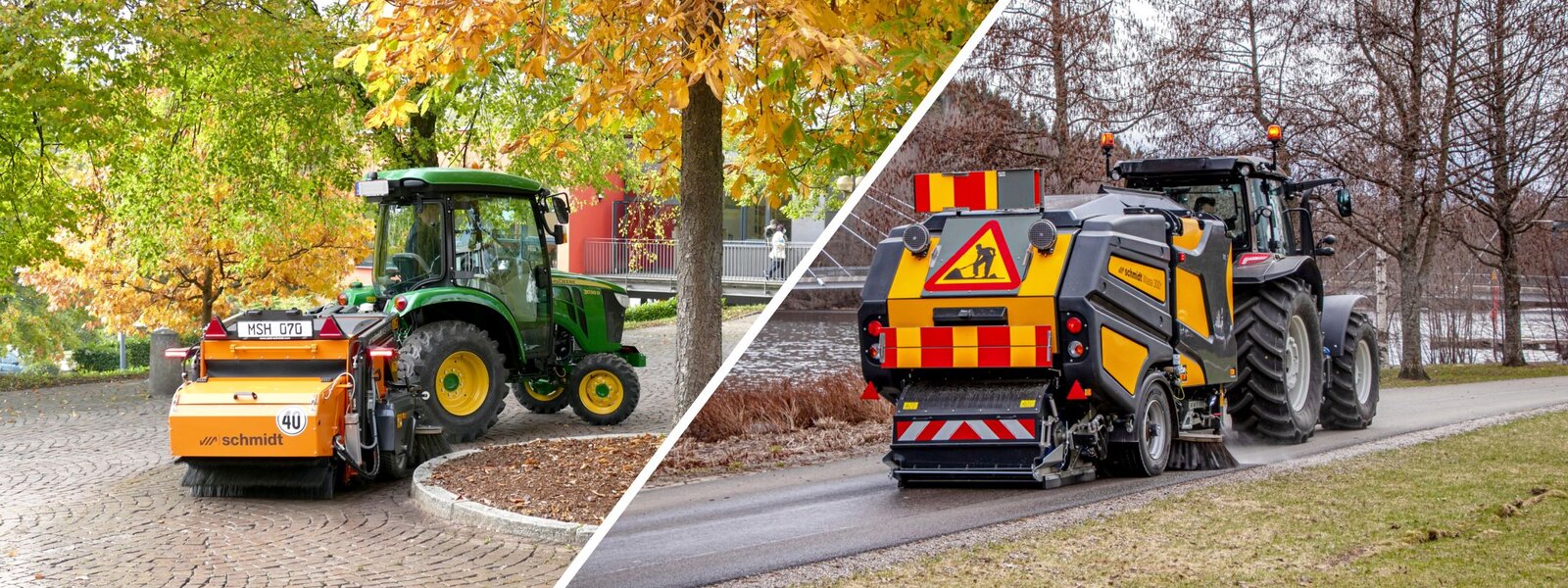Schmidt towed sweepers are driven by a hydraulic system that is usually supplied via the tractor's power take-off shaft or, depending on the model, they can also be connected to the tractor's power hydraulics. They pick up the dirt mechanically and thus cause significantly less fine dust than suction sweepers.
The Schmidt Wasa 300+ has a 3.0 m³ hopper and can sweep large areas and routes at a rate of up to 48,000 m² per hour. Thanks to its slim drawbar and swivel function, it is extremely manoeuvrable and can also work offset to the side of the towing vehicle. The hydraulic lifting and lowering of the disc brushes and the hydraulic ground contact pressure can be controlled via the control panel. In addition, the Wasa 300+ has a broom roller in the rear that is directly driven by the hydraulic motor. It can be transported or towed at speeds of up to 80 km/h and is equipped with an ABS braking system.
The Schmidt MSH machines are also extremely manoeuvrable thanks to a slim drawbar. Their slightly smaller debris hoppers of either 0.7 m³ or 1.5 m³, as well as the variable hitch, ensure that sweeping is possible efficiently even in tight spaces. The debris is conveyed to the centre by two side brooms mounted in front of the axle. The sweeping roller behind the axle throws the debris into the hopper.
Both machine types fulfil the best level of PM10/PM2.5 certification with four stars, are available to suit different speeds and are characterised by low operating costs. Be it at the weekly market, in parks, on industrial sites or farms, cycle paths, cemeteries or even on construction sites or landfills: If you have one or more towing vehicles, a towed sweeper is a good choice in many situations and flexible in terms of operations planning.
